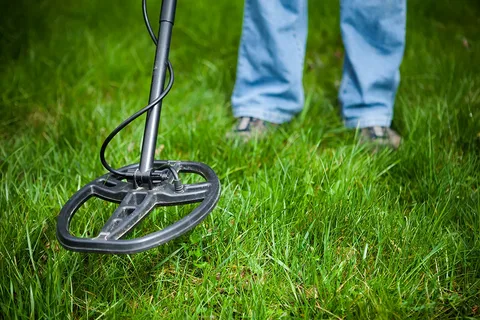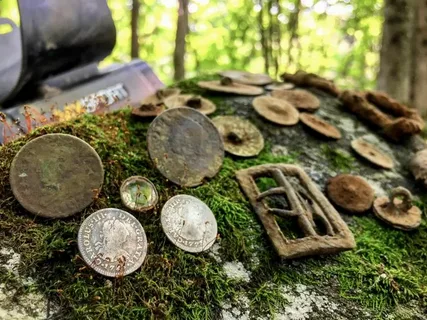Gold mining and processing are industries that have been integral to human civilization for centuries. The process of extracting gold from the earth and turning it into valuable products has long been a fascinating and complex endeavor. In this article, we will delve into the world of gold mining and processing, exploring the various methods and technologies used, as well as the environmental and social impact of these practices. From the ancient civilizations to modern-day operations, the journey of gold from the ground to the market is a fascinating one that continues to shape the world economy. Join us as we uncover the intricate world of gold mining and processing.
Exploring the World of Gold Mining and Processing covers the various processes involved in extracting gold from the earth, as well as the technologies and techniques used in gold mining. It also delves into the environmental impact of gold mining and the regulations and protocols in place to mitigate it. The book provides a comprehensive overview of the gold mining industry and the complex processes involved in turning raw gold ore into the valuable metal we know.
The Process of Gold Mining and Processing

Gold mining and processing involves a series of steps, from the discovery of a gold deposit to the actual extraction and processing of the gold ore. The process typically begins with the exploration and discovery of a gold deposit. Once a potential site is identified, the ore is extracted from the ground and transported to a processing plant.
At the processing plant, the ore undergoes various methods of extraction, including crushing, grinding, and chemical processes to separate the gold from the surrounding ore. This can involve using cyanide and other chemicals to leach the gold from the ore.
Once the gold is separated from the ore, it is further refined and processed to remove impurities and create gold bars or other forms for sale and distribution. This may involve melting the gold and casting it into molds or other processes to create the final product.
Throughout the entire process, strict environmental and safety standards are typically followed to minimize the impact on the surrounding environment and ensure the safety of workers. Overall, gold mining and processing involves a complex series of steps to extract and refine gold from the ground.
Exploring the Techniques of Gold Mining and Processing

Gold mining and processing involves a variety of techniques to extract and refine gold from its ore. Common techniques include panning, sluicing, dredging, and hard rock mining. Once the ore is extracted, it undergoes crushing, grinding, and chemical treatment to separate the gold from the surrounding material. The gold is then further purified through processes such as smelting, amalgamation, and cyanidation. Advances in technology have led to more efficient and environmentally responsible methods of gold mining and processing, including the use of gravity concentration, flotation, and carbon-in-leach processes. Overall, gold mining and processing require a combination of physical, chemical, and metallurgical techniques to extract and refine the precious metal.
In-Depth Look at Gold Mining and Processing Methods

A thorough examination of gold mining and processing methods involves understanding the various techniques used to extract and refine gold from the Earth. This includes exploration, drilling, blasting, hauling, crushing, grinding, chemical processing, and smelting. Gold mining requires extensive planning and environmental considerations to ensure sustainable practices. Additionally, advancements in technology and equipment have improved efficiency and reduced environmental impact in these processes. Overall, a comprehensive understanding of the methods involved in gold mining and processing is essential for advancing the industry and ensuring responsible practices.
The Environmental Impact of Gold Mining and Processing

Gold mining and processing have a significant impact on the environment. The process of extracting gold from the earth involves the use of large amounts of water, chemicals, and energy. This can lead to the contamination of local water supplies and soil, as well as the destruction of wildlife habitats.
Additionally, the creation of open pit mines and the use of heavy machinery can result in deforestation and soil erosion. The use of cyanide in the extraction process also poses a risk to nearby communities and ecosystems.
Furthermore, the byproducts of gold mining, such as tailings and waste rock, can release harmful substances into the environment, including heavy metals and sulfuric acid. These can contaminate water sources and have long-term effects on the surrounding ecosystems.
Overall, gold mining and processing have a significant environmental impact, and efforts are being made to minimize these effects through more sustainable and responsible practices.
The Economic Significance of Gold Mining and Processing
Gold mining and processing play a crucial role in the economic development of many countries. The extraction and processing of gold create employment opportunities, generate income, and contribute to the overall growth of the economy.
Many countries that are rich in gold reserves rely heavily on gold mining and processing to drive their economy. The industry provides a significant source of export revenue, which can contribute to a positive balance of trade for these countries.
Gold mining and processing also stimulate the development of infrastructure such as roads, power supply, and transportation systems in remote areas where gold deposits are located. This infrastructure not only supports the mining industry but also benefits other sectors of the economy and improves the overall quality of life for people in these regions.
Furthermore, gold mining and processing can attract foreign investment and technology transfer, leading to the development of new industries and diversification of the economy. This can contribute to long-term economic stability and growth.
In addition to its direct economic impact, gold mining and processing also have indirect effects on other industries such as manufacturing, construction, and services. For example, the demand for machinery, equipment, and supplies needed for gold mining and processing can create business opportunities and stimulate economic activity in related sectors.
Overall, the economic significance of gold mining and processing cannot be overstated. It is a vital industry that contributes to economic growth, job creation, infrastructure development, and the overall well-being of many countries around the world.
Understanding the Challenges of Gold Mining and Processing
Understanding the challenges of gold mining and processing involves understanding the complex and often hazardous processes involved. These challenges can include technical and engineering difficulties in extracting gold from the earth, as well as environmental and social impacts such as deforestation, water pollution, and displacement of local communities. Additionally, the fluctuating price of gold and the increasing scarcity of easily accessible deposits further complicates the process. Addressing these challenges requires a comprehensive approach that considers the economic, environmental, and social implications of gold mining and processing.
The Evolution of Gold Mining and Processing Technology
See also: gold detector machine
The evolution of gold mining and processing technology has been driven by advancements in machinery, techniques, and scientific understanding. Throughout history, gold mining has transitioned from traditional methods such as panning and sluicing to more industrialized processes involving heavy machinery and chemical extraction. The development of more efficient and environmentally-friendly processing techniques, such as cyanide leaching and carbon adsorption, have also significantly impacted the industry. Additionally, advancements in exploration and drilling technology have enabled miners to locate and access gold deposits that were previously inaccessible. Overall, the evolution of gold mining and processing technology has greatly improved the efficiency, safety, and sustainability of the industry.
Exploring Sustainable Practices in Gold Mining and Processing
Exploring Sustainable Practices in Gold Mining and Processing involves finding ways to minimize environmental impact, improve worker safety, and promote ethical and responsible business conduct. This includes implementing efficient water and energy usage, reducing carbon emissions, and using non-toxic chemicals in the extraction and processing of gold. It also involves engaging with local communities and indigenous peoples to ensure their rights are respected and they benefit from the mining operations. Additionally, sustainable practices in gold mining and processing involve proper waste management and land reclamation to restore the natural environment after mining activities have ceased. Overall, the aim is to balance the economic benefits of gold mining with the need to protect the environment and safeguard the well-being of workers and local communities.
The Global Market for Gold Mining and Processing
The global market for gold mining and processing is driven by the demand for gold in various industries, including jewelry, electronics, and investment. As the price of gold continues to increase, there is growing interest in mining and processing operations worldwide. The market is also influenced by factors such as technological advancements in mining and processing techniques, environmental regulations, and geopolitical events. Additionally, the market for gold mining and processing is shaped by the availability of reserves, labor costs, and infrastructure in different regions. Overall, the global market for gold mining and processing is dynamic and influenced by a wide range of factors.
The Future of Gold Mining and Processing
The future of gold mining and processing is expected to evolve with advancements in technology and sustainability measures. This includes the use of automation and robotics to improve efficiency and safety in mining operations. Additionally, there is a growing emphasis on utilizing environmentally friendly processes such as cyanide-free extraction methods and utilizing renewable energy sources to power mining operations. As the industry strives to minimize its environmental impact, there is also a focus on reclamation and restoration of mining sites once operations have ceased. Overall, the future of gold mining and processing is likely to be characterized by increased technological innovation and a stronger commitment to sustainable practices.












